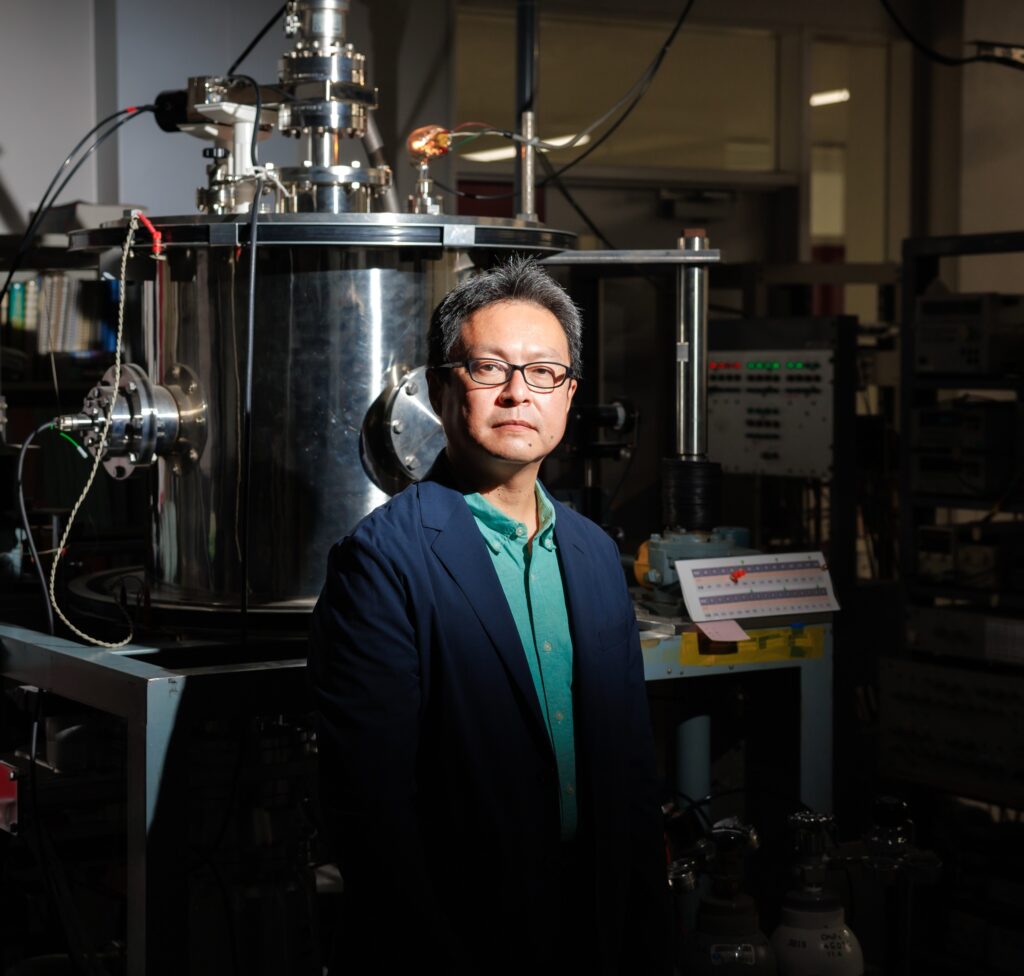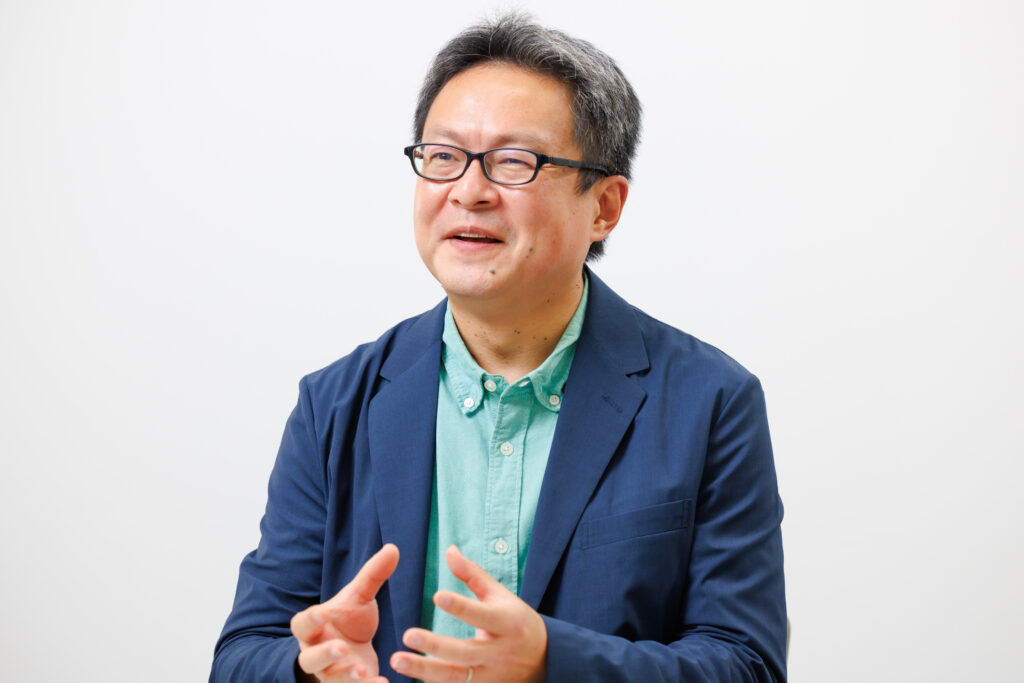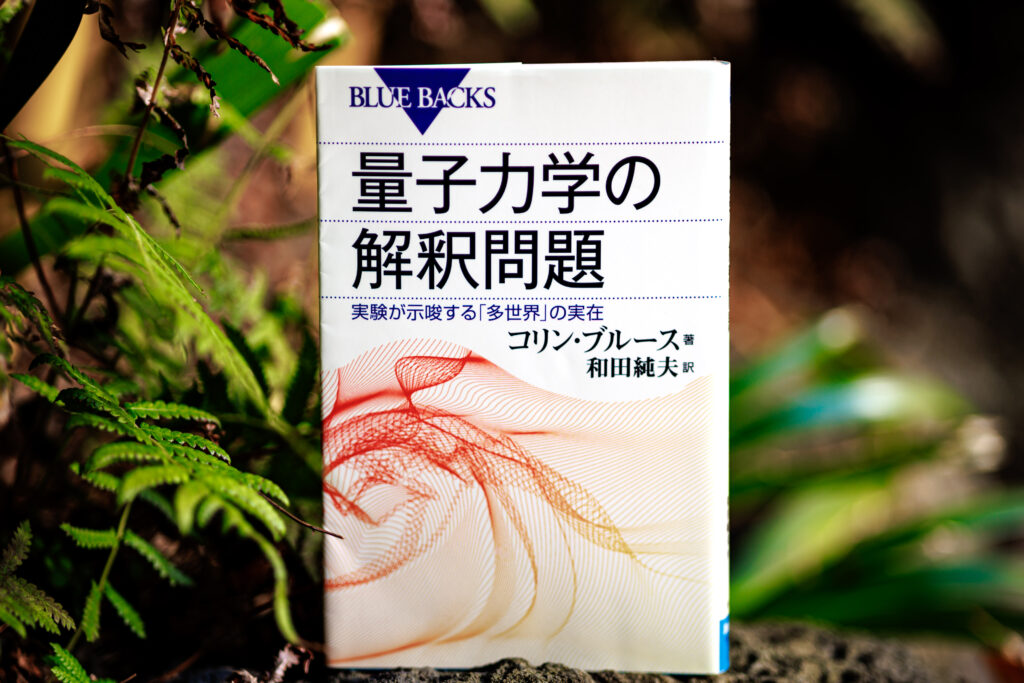
Professor Masamitsu Hoshino of the Faculty of Science and Technology measures and sheds light on the characteristics of the atoms and molecules that surround us. Here, he discusses the joy to be found in investigating plasma, carbon dioxide, and other substances that are invisible to the naked eye.
The nature and matter that surrounds us consists of atoms and molecules. The air, for example, though it is invisible to us, is composed of nitrogen and oxygen. “Atomic physics” is the field that seeks to elucidate the structures of such particles at a “micro” level.
There are many things we still do not understand about the new molecules that have been industrially created using science and technology and, in my research, I use the methods of atomic physics to uncover their properties.
At present, I am engaged in joint research with the private sector into thin film formation—a process that is essential for the production of the semiconductors we use in our smartphones—and into plasma—which is composed of gas molecules and is indispensable for etching substrate surfaces.
If you add heat or other forms of energy to a solid, it turns into a liquid; add heat to a liquid, and it turns into a gas. If you apply much higher energy, then these gas molecules “dissociate” into atoms. If you continue adding energy, then a phenomenon called “ionization” occurs, in which some electrons are emitted from their atoms; these electrons collide with other atoms, and the atoms themselves break down.
This state is called “plasma”—we can therefore describe plasma as being formed through electron collisions.
Lightning and auroras are naturally occurring forms of plasma

Plasma emits visible light when it releases its own energies from atoms and molecules, and this is why it appears to glow. Common examples of plasma include lightning—which is created when electrons collide with molecules in the air and ionize them —and auroras—which are formed when electrons approaching from the sun collide with oxygen and nitrogen in the earth’s atmosphere.
In semiconductor manufacturing, artificially created plasma is applied to raw ingredients to create the semiconductor substrate. The goal of my research is to discover and identify the characteristics of molecules that enable plasma to be more efficiently created, and this entails careful investigations of the properties of plasma at a micro level.
If my research is successful, in the future it should help reduce production costs and contribute to the creation of more accurate plasma models.
In my research, I frequently use a device called an electron spectrometer: we introduce gas molecules into a vacuum chamber, then irradiate electrons to them. Electrons usually behave as a sort of glue—they bind the atoms in a molecule together, and they themselves are trapped within the molecule, too.
However, we can release these trapped electrons by collisions of other electrons with the molecule from the outside. We can then use detectors and computers to record these emitted electrons, and understand what is happening inside the molecule.
Observing what happens when heat is applied to carbon dioxide
Very few molecules are present in a vacuum chamber, and so it is extremely unlikely that an electron from outside will collide with one of these molecules—indeed, it is not unusual for it to take several years to obtain the requisite experimental data. In addition, we typically have to develop new devices for each individual research project—and this, of course, requires even more time.
It is work that demands patience, but my research generates interest both in the private sector and among colleagues from various other fields—and I find this to be rewarding.
Even for commonplace molecules whose structure and properties are known, there are a fair amount of research themes. For example, I have recently started researching carbon dioxide—a major contributor to global warming—as there are many things that go on at a micro level that we do not fully understand.
If we can elucidate the properties of carbon dioxide molecules, we may find clues to better understanding the earth’s environment. In fact, I hope to communicate just how fun this research can be to younger generations.
The book I recommend
“Schrodinger’s Rabbits: The Many Worlds of Quantum”(Ryōshi rikigaku no kaishaku mondai)
by Colin Bruce, Japanese translation by Sumio Wada, Kodansha

This was the first book I read after I started studying quantum mechanics at university. Quantum mechanics is a strange branch of learning, in which invisible phenomena are explained via various theories. It was this book that introduced me to the wonders of the world of “micro.”
-
Masamitsu Hoshino
- Professor
Department of Materials and Life Sciences
Faculty of Science and Technology
- Professor
-
Professor Masamitsu Hoshino graduated from the Department of Physics, Faculty of Science and Technology, Sophia University; he received his Ph.D. in Physics from the university’s Graduate School of Physics. After working as a Special Postdoctoral Researcher at RIKEN, and then as an assistant professor and associate professor at the Sophia University Faculty of Science and Technology, he was appointed to his current position in 2019.
- Department of Materials and Life Sciences
Interviewed: November 2022